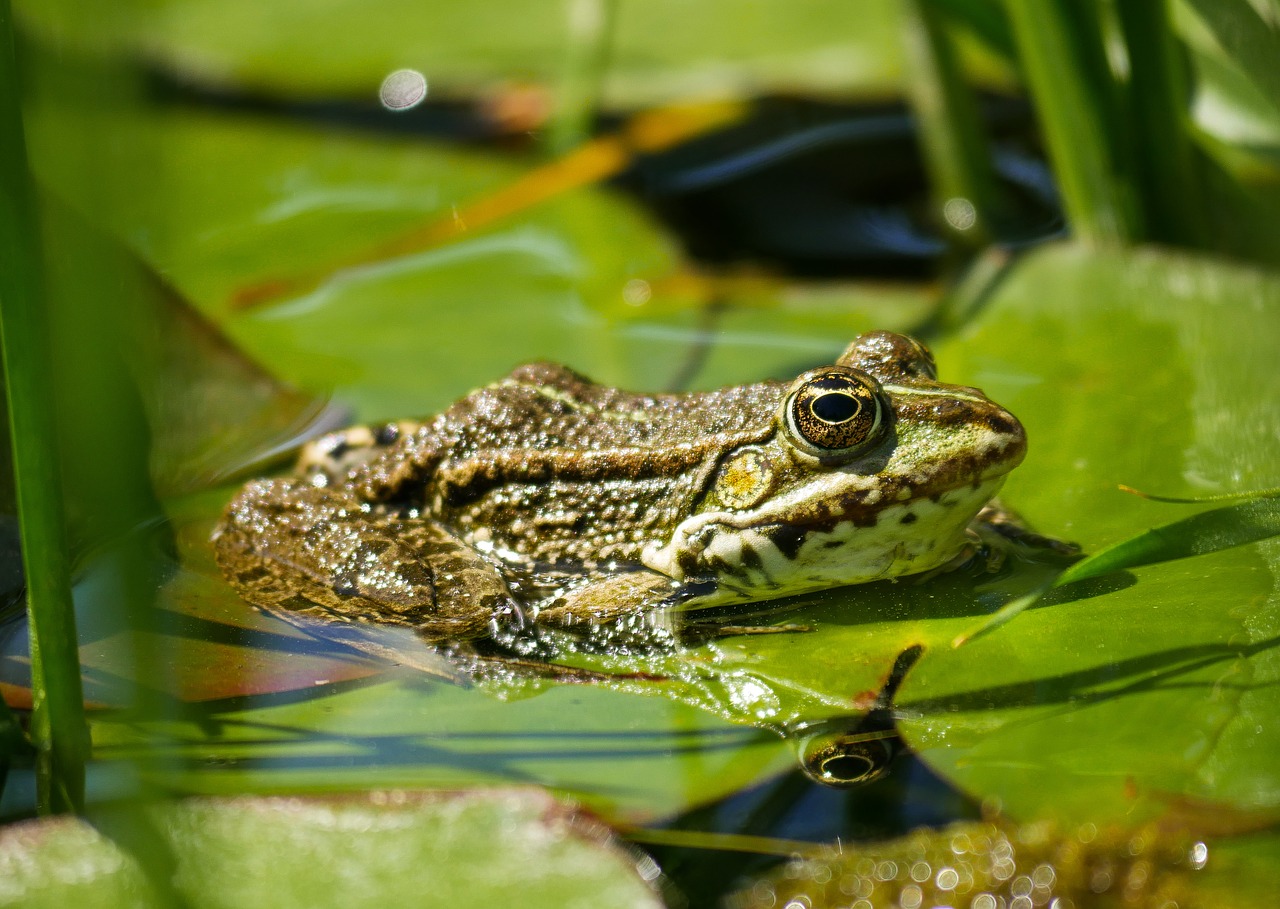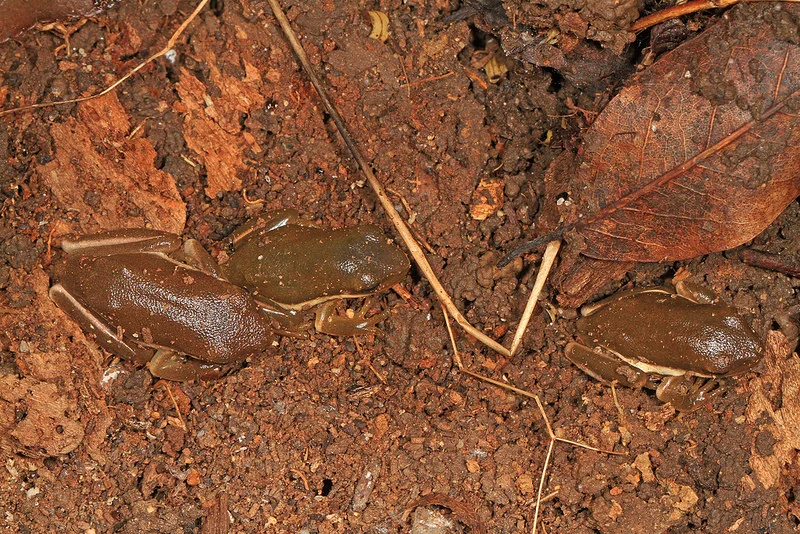Frogs live all over the world: from rainforests to deserts, and from the suburbs to the Arctic Circle. Which means they have to withstand some pretty cold and pretty hot weather.
And that brings us to two cool things frogs can do: they can hibernate through the cold, or estivate (go dormant) through the heat.
In hibernation, a frog finds a safe place to hangout all winter, then its metabolism slows dramatically. A land frog might dig a burrow to get below the frost line or crawl into a crevice and cover itself with dead leaves. A water frog might sink to the bottom of a pond and partially immerse itself in mud, but not too much to cut off all the oxygen soaking through its skin from that H2O.
Some frogs can survive being frozen: though ice crystals may form under their skin or in their body cavities, they've lowered the freezing point of cells in important organs by pumping in extra glucose so those don't turn to ice (sorry, Elsa, they have you beat on this one). The frog no longer breathes, its heart no longer beats; and yet, as soon as it warms up, it comes back to life.
In super hot areas, some frogs estivate, which is similar to hibernation. They burrow into the soil and go dormant, shedding several layers of skin over the months that follow. These layers of skin form a tight barrier around the frog, keeping moisture from evaporating. Only the frog's nostrils are exposed to air, allowing it to breathe.
In addition to these special skills, frogs can drink and breathe through their skin, have tongues that attach at the front of their mouths, and have teeth. Some are nearly see-through, some can almost fly, and one type has enough poison in its skin to kill 10 to 20 men.
So, yeah, frogs are pretty interesting. I might just have to start another blog category about them.








